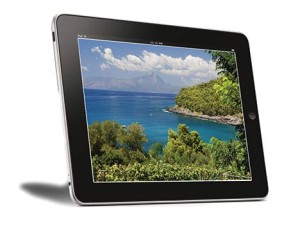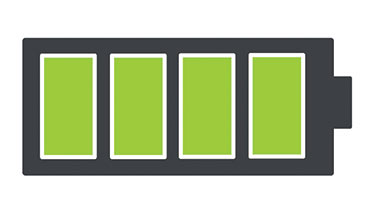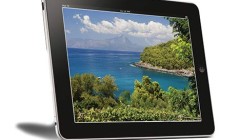Firing My iPad
It’s not a big secret that, while they are much coveted, Apple mobile devices also carry two significant drawbacks: cost and battery life. While I’m not telling you anything new, whether it actually pioneered the technology or not, definitely did make desktop computers, mp3 players, and certainly cell phones much more user-friendly, even fun to operate. Of course, the story has made the rounds many times that Steve Jobs, having been invited to visit Xerox, got a glimpse of the copy machine giant’s new GUI, or graphic user interface which it intended to roll out on its products, and ran with that idea. His genius, so the story goes, was not in coming up with new ideas, it was in making these ideas sexier.
 Still, we all know by now that Apple also made some spectacular blunders along the way. Apple, without a doubt, got the desktop computer into our homes. The PC existed at the office, certainly. But to operate it, the user had to type in arcane strings of DOS. Now, I’ve argued that, to a degree, a certain type of person actually enjoyed knowing the secret strings that would make those plain little boxes with their black screens and tiny white glowing letters do what they were ordered to do. But most people were much more excited when the Apple came out with a machine that could be operated using a mouse and little icons that you dragged around the screen – symbols that, like a stop sign, people soon associated with tasks they wanted their computer to perform. Better yet, children could easily run these computers, which made them the preferred computer of the classroom. Apple was a shoo-in to win the VHS vs. Betamax faceoff of its day. Not so fast, Nagasaki. Microsoft, one of the entrants into the PC OS (operating system) world had its moments of fame and shame as well. Its shame? Bill Gates’ now infamous remark along the lines of the Internet not being of any interest to Microsoft. But fame? That was its willingness to open its “kernel,” or the inner workings of its OS to independent developers.
Still, we all know by now that Apple also made some spectacular blunders along the way. Apple, without a doubt, got the desktop computer into our homes. The PC existed at the office, certainly. But to operate it, the user had to type in arcane strings of DOS. Now, I’ve argued that, to a degree, a certain type of person actually enjoyed knowing the secret strings that would make those plain little boxes with their black screens and tiny white glowing letters do what they were ordered to do. But most people were much more excited when the Apple came out with a machine that could be operated using a mouse and little icons that you dragged around the screen – symbols that, like a stop sign, people soon associated with tasks they wanted their computer to perform. Better yet, children could easily run these computers, which made them the preferred computer of the classroom. Apple was a shoo-in to win the VHS vs. Betamax faceoff of its day. Not so fast, Nagasaki. Microsoft, one of the entrants into the PC OS (operating system) world had its moments of fame and shame as well. Its shame? Bill Gates’ now infamous remark along the lines of the Internet not being of any interest to Microsoft. But fame? That was its willingness to open its “kernel,” or the inner workings of its OS to independent developers.
Apple, on the other hand, held this information so close that nobody but Apple could develop anything for its platform. The result? Games and applications galore for Microsoft – nothing but what Apple could come up with for the MacIntosh. And thus Apple lost the OS wars. The school market sustained Apple, but it fell far, far behind even in the at-home market for desktop computers, largely, I think, because of games. People were enchanted with computer gaming, which got the machine in the door to the home, and  the rest is history. Apple continued to limp along, and then it took another existing technology – the MP3 player – and added a silly little wheel-like interface to it, and a whole new chapter in computing history was written. Not too long after that, Apple figured that a cell phone isn’t just a cell phone – nor is it just a PDA (personal digital assistant), nor yet a camera. It is all of these, none of these, and anything else that can be packed into a pocket-sized device that doesn’t just allow you to talk on the phone whenever and wherever, but communicate on a grand scale on a constant basis. Apple soared to unimaginable heights. Soon followed the iPad – again, the tablet computer wasn’t new, just the design of the Interface – all the swiping, no stylus required – was so much easier and, well, more fun than the tedium of existing tablet computer input – and Apple’s place is history was assured. But both by design, and perhaps by bad design, Apple mobile devices have, as noted at the beginning of this short history of Apple and Everything, two Big Flaws: they cost too much. WAY too much. And their batteries are not only relatively short-lived, but they are extremely difficult to replace. So it was that, much as I loved my iPad – doted on it, kept track of its whereabouts with almost the same kind of jealous fascination a new mother will heap on her infant – the day came when its battery began to fail. I knew from previous experience, having replaced an iPod battery (successfully, I might add, with no small amount of self-congratulation), that this was probably not an option. And the iPad was not even new when I bought it, so I came to the somewhat bitter conclusion that the device would have to be replaced. The batteries aren’t terribly expensive – in the $50-75 neighborhood. But then you need a special kit for opening the device. And you have to be prepared to draw a schematic for how you take apart the insides to get at the battery (and you have to wonder if they are not so constructed to purposefully defeat the DIY champion who’d happily replace a battery now and then to keep his old device running). You also have to be aware that, once the iPad’s case is breached, all bets are off, and while in many cases you can send in a dead device to Apple and get a comparable model in return (which is their “battery replacement” plan), this won’t happen if you’ve tried, and failed, to replace the battery yourself.
the rest is history. Apple continued to limp along, and then it took another existing technology – the MP3 player – and added a silly little wheel-like interface to it, and a whole new chapter in computing history was written. Not too long after that, Apple figured that a cell phone isn’t just a cell phone – nor is it just a PDA (personal digital assistant), nor yet a camera. It is all of these, none of these, and anything else that can be packed into a pocket-sized device that doesn’t just allow you to talk on the phone whenever and wherever, but communicate on a grand scale on a constant basis. Apple soared to unimaginable heights. Soon followed the iPad – again, the tablet computer wasn’t new, just the design of the Interface – all the swiping, no stylus required – was so much easier and, well, more fun than the tedium of existing tablet computer input – and Apple’s place is history was assured. But both by design, and perhaps by bad design, Apple mobile devices have, as noted at the beginning of this short history of Apple and Everything, two Big Flaws: they cost too much. WAY too much. And their batteries are not only relatively short-lived, but they are extremely difficult to replace. So it was that, much as I loved my iPad – doted on it, kept track of its whereabouts with almost the same kind of jealous fascination a new mother will heap on her infant – the day came when its battery began to fail. I knew from previous experience, having replaced an iPod battery (successfully, I might add, with no small amount of self-congratulation), that this was probably not an option. And the iPad was not even new when I bought it, so I came to the somewhat bitter conclusion that the device would have to be replaced. The batteries aren’t terribly expensive – in the $50-75 neighborhood. But then you need a special kit for opening the device. And you have to be prepared to draw a schematic for how you take apart the insides to get at the battery (and you have to wonder if they are not so constructed to purposefully defeat the DIY champion who’d happily replace a battery now and then to keep his old device running). You also have to be aware that, once the iPad’s case is breached, all bets are off, and while in many cases you can send in a dead device to Apple and get a comparable model in return (which is their “battery replacement” plan), this won’t happen if you’ve tried, and failed, to replace the battery yourself.

The story gets even a little less appealing when you realize that, to a degree, Apple is guilty of deliberately obsoleting (is that a word? if not, it is now) its devices by updating the OS automatically on a synching device (so, your laptop or desktop that has iTunes on it, to which you synch your iPad or iPhone) by automatically update itself to the latest and greatest version of iTunes – unless you order it not to – and, after a while, your device may be too old to handle the new iOS. Worse, you typically can’t roll iTunes back to an older version because the data file will usually be overwritten with the new iOS and thus an older version of the software can’t be used. Now, I’m not saying these things can’t be worked around. What I am saying is that there comes a point at which you ask the age old question: is it worth it? Well, when you look at the pricetag of a new iPad, you may, like me, go through quite a bit of pain before you finally admit defeat and buy a new one. But that day did finally arrive. In the meantime, however, my sister had gotten the Kindle Fire HD. For under $200. I looked at the $600 iPads, then back at the $200 Kindle Fires. Then back again, and again. I looked into what the Kindle Fire would do in terms of software – pretty much the same things the iPad would do. I checked out the displays – yes, the retinal display on the iPad is pretty impressive. But for me the device is more for convenience than ideal aesthetics, so that wasn’t a do-or-die factor. I was afraid that my purchased apps would be worthless. Again, not so. The important ones were free and easy to install. I played around with the interface a bit, and found that yes, the iPad was somewhat easier to navigate – though some of this, I have since discovered, was just a matter or getting used to. Now that I’ve had the Kindle Fire for a while, I find I can move around it almost as easily as I ever did my iPad. There are, of course, other options, such as the Galaxy, which users swear is not only as easy to use as the iPad, but its display is even better. Another thing I will admit that I like about the Kindle Fire is that it connects for charging with simple, everyday USB and camera-type connectors. No need for expensive and hard-to-find proprietary connectors. I recall panicking because I had purchased ten iPad/iPhone connecting devices, and then the new iPhone came out and had a whole new style connector. Toss out the old car chargers and wall chargers and USB chargers and start all over again. Worse, you were limited to the one that came with your new iPhone 6 until Apple finally released them as stand-alone peripherals. And they weren’t cheap. And of course it took the after market quite a while to catch up. All things considered, the iPad is a “nicer” device – it has a good “feel” to it, and folders for grouped apps are nifty (as opposed to a carousel display) as is its sturdier connection to a web browser (I find my Kindle Fire Silk browser, and even Firefox, crash frequently). Still, for the money, it’s nice to know that there is another choice out there, and a good one, to boot. Literally.











